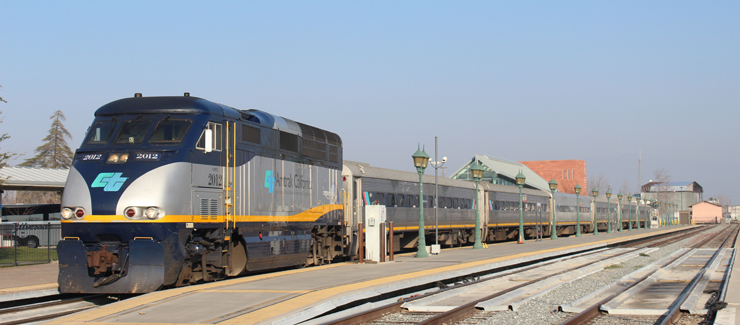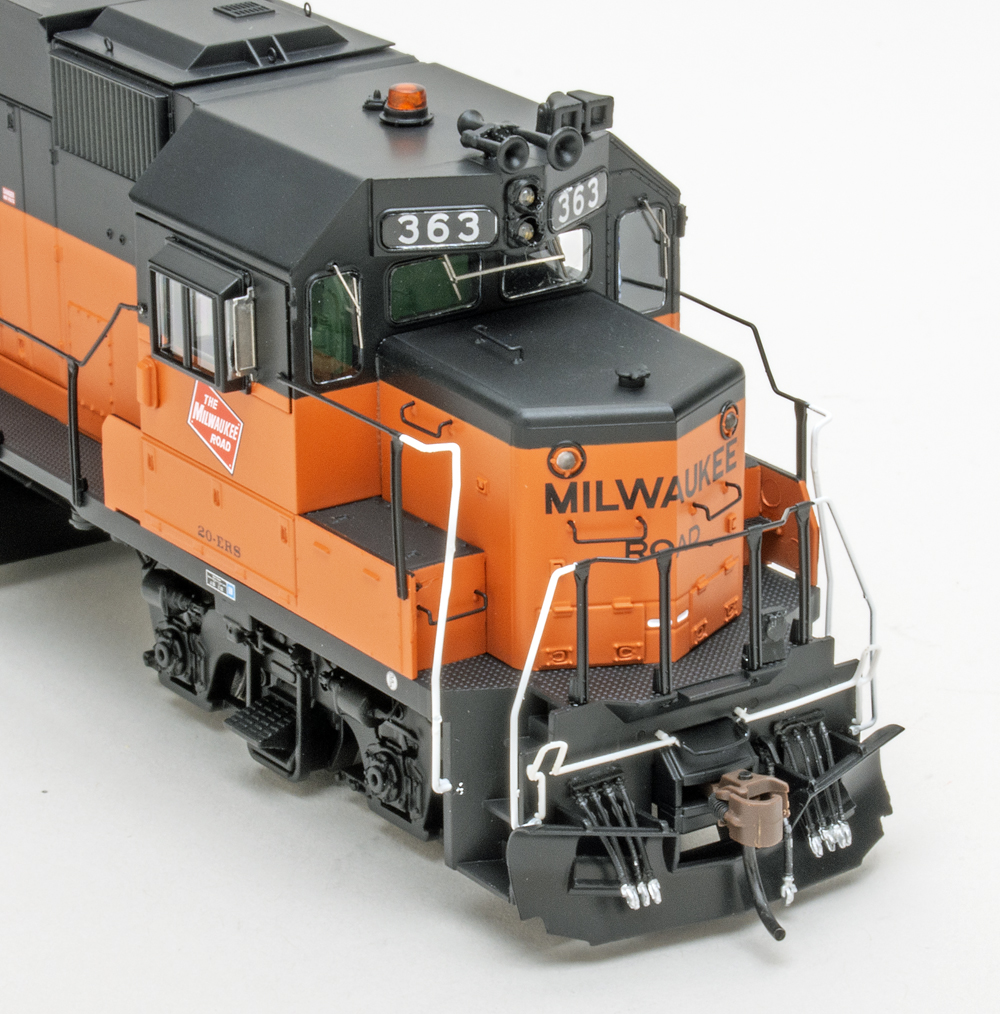STOCKTON, Calif. — Amtrak’s San Joaquins have introduced new schedules to better accommodate weekend travelers and shorten connections to bus service.
The changes, which took effect on Monday, Dec. 17, cover three trains:
— Train No. 701 now departs Fresno, Calif., at 4:45 a.m., arriving at Sacramento at 7:59 a.m., shortening its travel time by 10 minutes.
— Train No. 718, which previously ran from Oakland to Fresno, is extended to Bakersfield on Fridays, Saturdays, and holidays.
— Train No. 1701, which operates on Saturdays, Sundays and holidays, will originate in Bakersfield rather than Fresno.
For full information, visit the San Joaquin Joint Powers Authority website.















Anna, The host railroad would be the UP (originally SP). The line between Caliente and the summit is largely single track and adding capacity would be expensive. One other problem is that the route is significantly longer than the I-5 route – the AT&SF San Joaquin service bussed passengers from Bakersfield to L.A.
There had been proposals going back to at least the 1940’s to run a line through Tejon pass (i.e. parallel to I-5, formerly US-99), with varying lengths of tunnels. Any of these proposals would have taken hours off of the L.A. to Bakersfield segment, but payback would have been unlikely.
NORSKE!
It would be nice if this train went all the way into LA Union station but I understand that the problem is that the host railroad does not want a passenger train transiting the Tehachapi (sp?) Loop. Is this correct? If so, how can this objection be overcome?
The above comments are general in nature and do not form the basis for an attorney/client relationship. They do not constitute legal advice. I am not your attorney. Find your own damn lawyer.
The same reason the Tehachapi route is circuitous, slow and (therefore) operationally expensive also inhibits I-5 corridor freight service, particularly service sensitive intermodal (which is a UP problem since BNSF intermodal over Tehachapi serves long haul lanes to the Midwest, Texas or the southeast and the cost and time hit is small compared to the rest of the largely faster and cheaper remainder of these lanes).
It’s too bad a comprehensive public-private tunneled route Tejon-Santa Clarita supporting intermodal freight, an LA extension of San Joaquin service and eventual high speed rail was never contemplated. If it had been, UP intermodal market share on the I-5 corridor wouldn’t be so insignificant (and might spur UP to increase capacity and speed in the mountains in Northern California and over the Cascades). But there also would have be much less of a “political” reason to route the high speed rail through the “expensive land acquisition” populated San Joaquin Valley, and the overall high speed rail project could’ve been much less expensive not only due to cheaper land acquisition along mostly empty I-5, but also because it wouldn’t need to be engineered for such high speeds to meet the LA-SF trip time requirement with a shorter route and no intermediate stops.